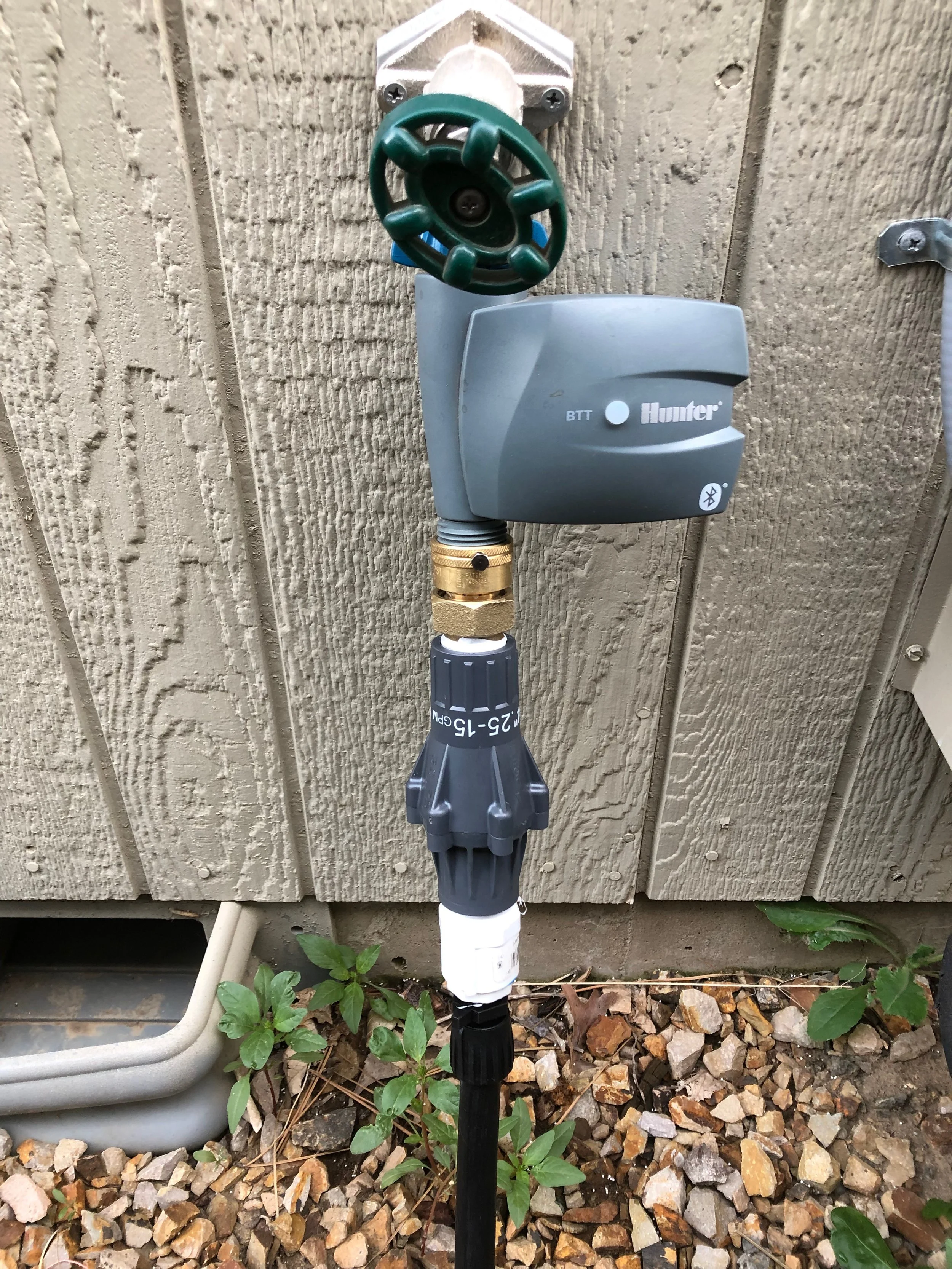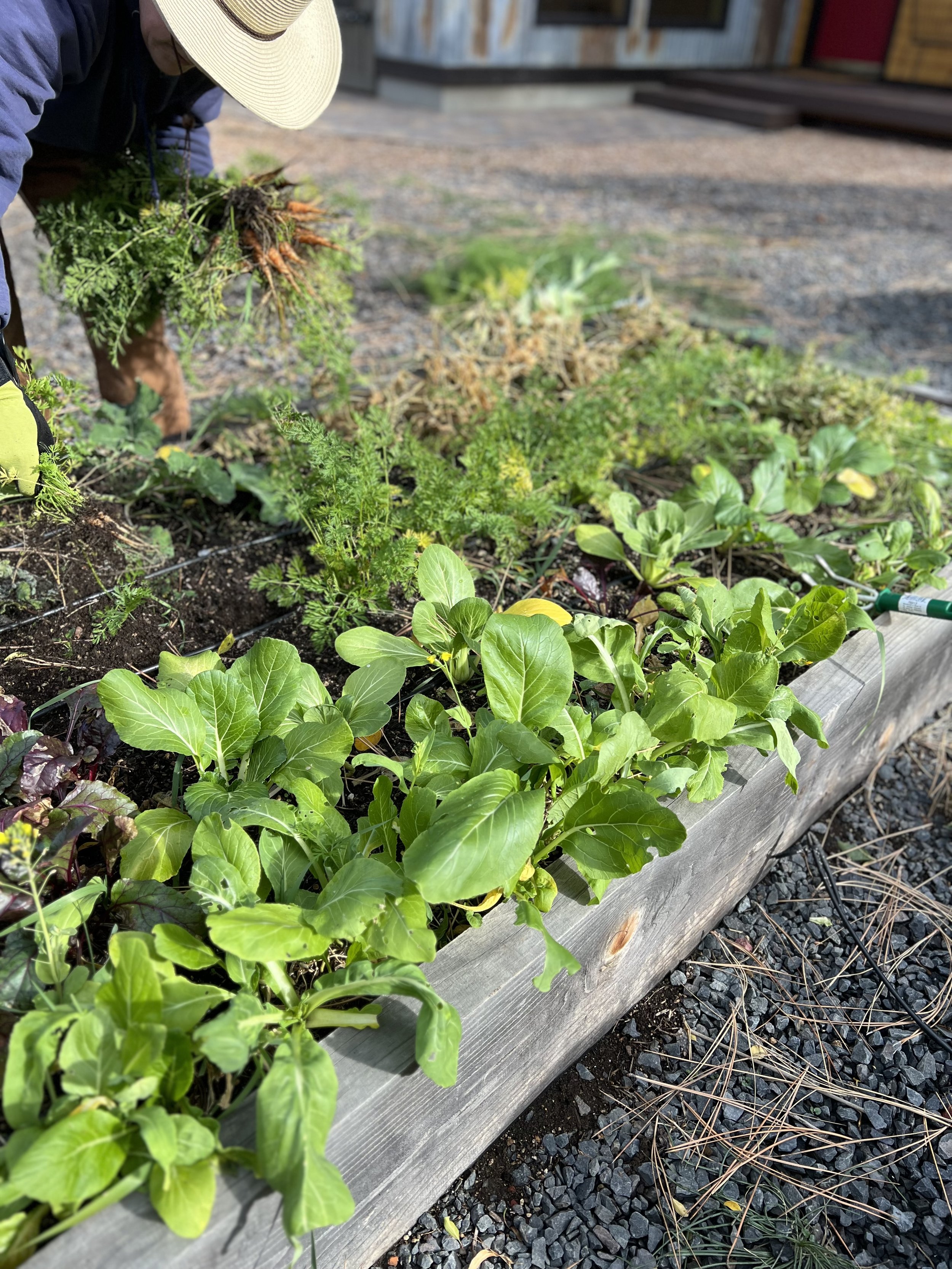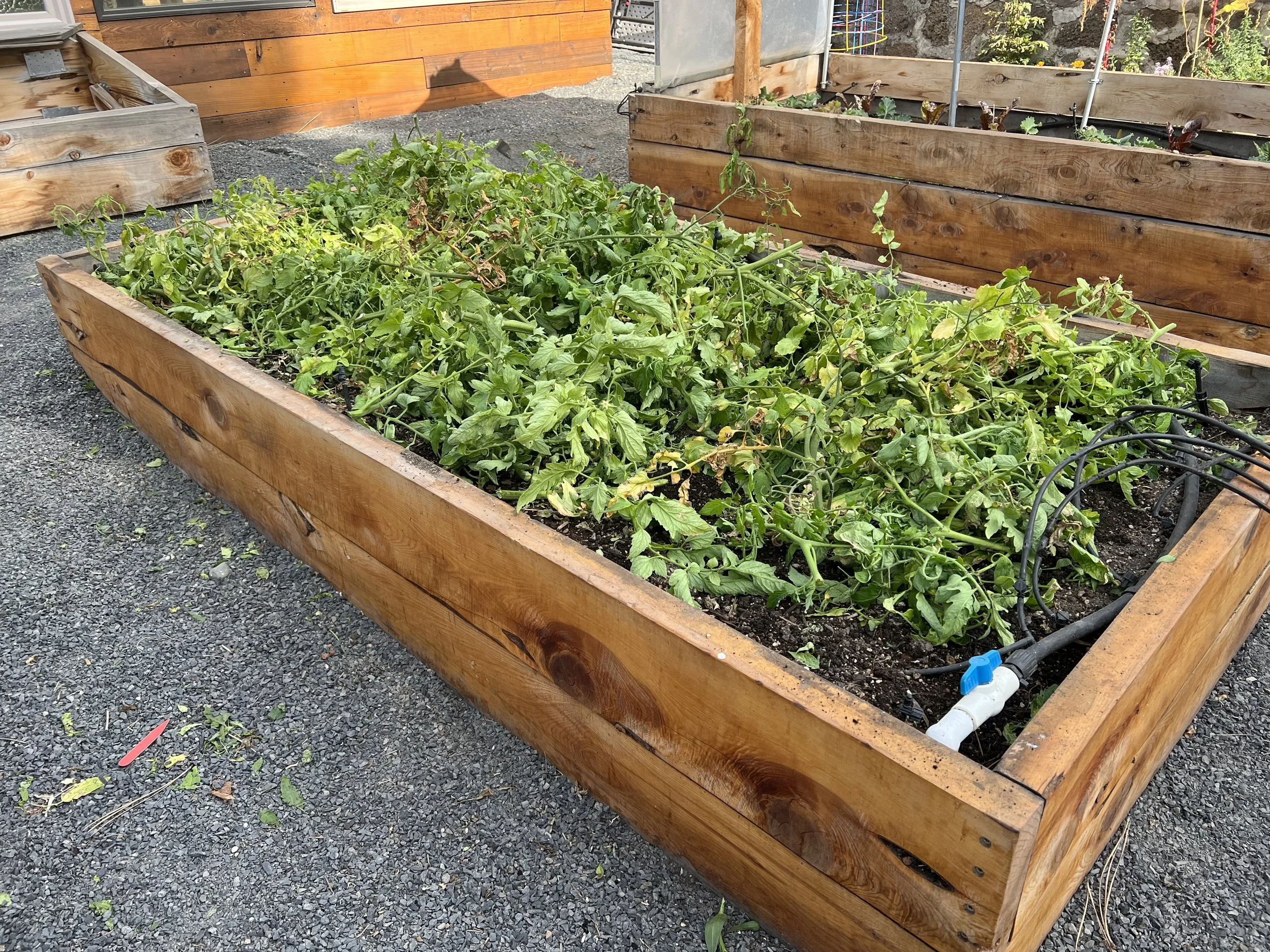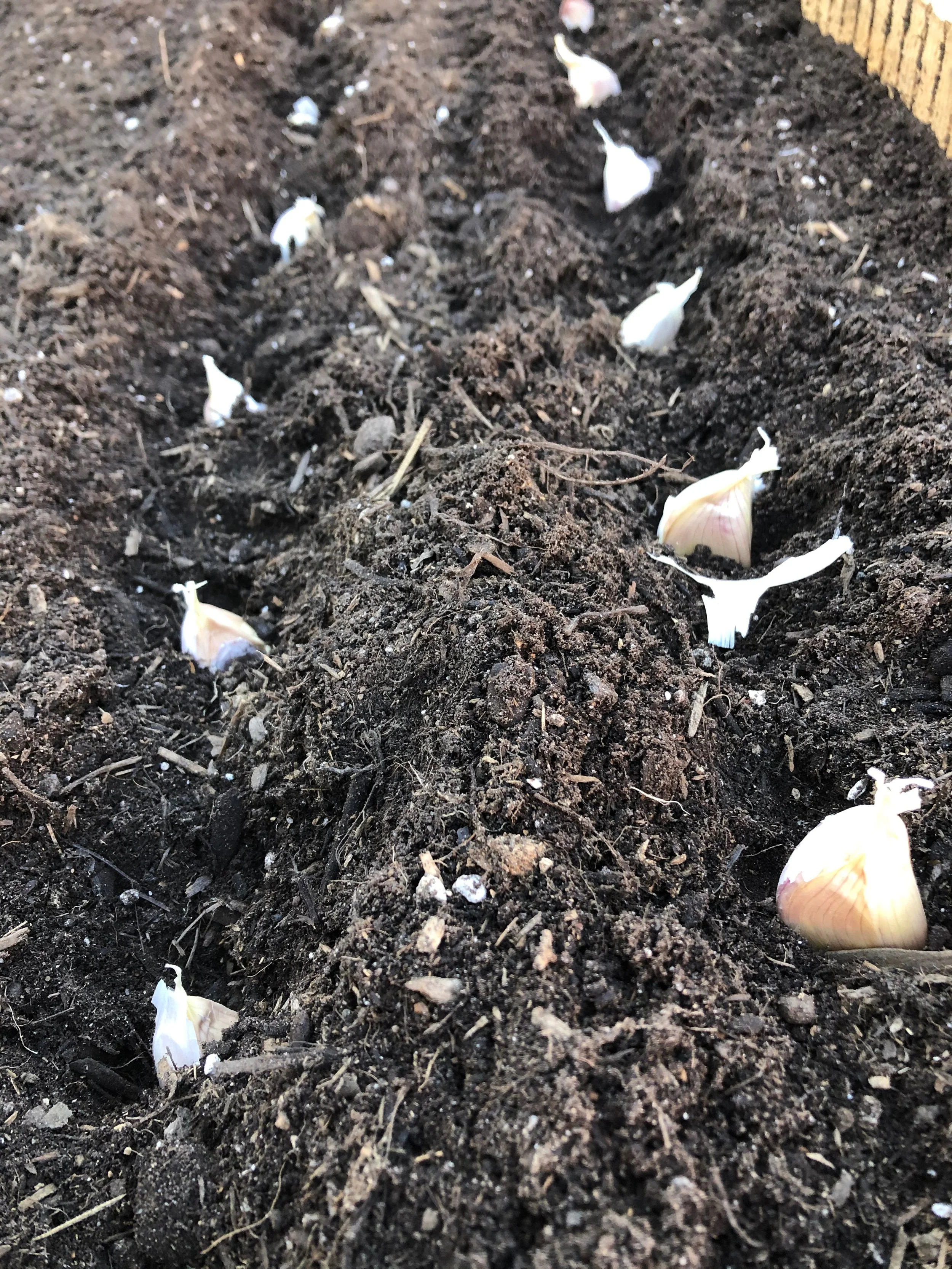How do I winterize my veggie garden?
Winterizing uncovered veggie garden beds in the fall helps to care for soil and get prepared for spring planting.
Irrigation:
Have a local professional blow out irrigation lines.
Disconnect hoses from hose bibs and bring hose bib timers indoors (if you haven’t already).
Clean up:
Harvest everything that is still harvestable. If the mornings are frosty, wait to harvest leafy greens until they thaw out.
Flip your drip irrigation lines out of your garden bed. Then, mulch with compost. We suggest applying 1/4”- 1/2” layer of finished compost to the top of your raised beds to then work in as an amendment in the spring.
Flip your drip irrigation lines back into your garden bed (so they aren’t a tripping hazard). You can, but don’t have to, landscape staple them back in, as they’ll be removed again in the spring. Add additional mulch of pine needles, dried grass clippings, straw, or shredded leaves. Use what you have available on your property. The additional mulch will need to be removed before planting next season.
But what about the plant material that has succumbed to frost and there’s nothing left to harvest? You don’t need to pull every plant completely out of your garden. Cut pest and disease-free plants at the base of their stems, leave their roots in the soil to decompose, and chop (into as small of pieces as you have at the patience and bandwidth for) and drop the above ground plant material into your beds before adding your finished compost mulch on top. The plant material will decompose over winter while also providing shelter for beneficial insects.
Fall planting:
In beds that haven’t been chopped and dropped, amend your soil with compost and then plant
Garlic and/or shallots. Just keep in mind that next year’s crop won’t be ready to harvest until July! So, be sure to evaluate how much real estate you want to designate for them before planting!
Spinach, mache, and/or claytonia seed. If the soil temperature is still warm enough at a minimum of 45-50 degrees for them to germinate, they’ll likely sprout and then go dormant through winter. They should start growing again once the days get longer in February.






